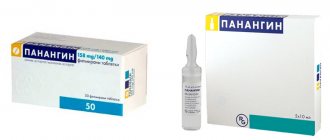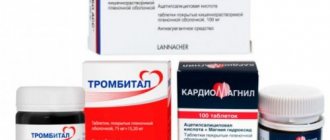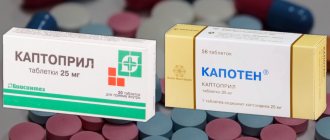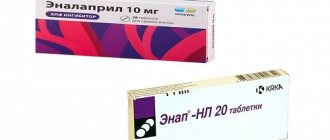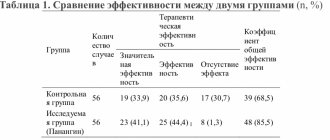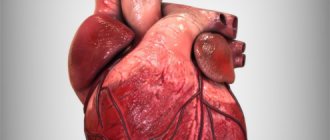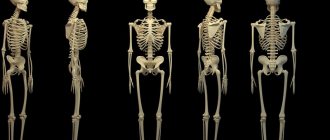Good day, dear readers, today we will talk about which drug is better, Asparkam or Panangin. Full instructions for them are located under the links, but here we will analyze them into small components, look for similarities and differences, study their strengths and weaknesses, who can use them and who cannot. We will also briefly go through their instructions for similarities, determine which drug is the original and which is the analogue, go over the pricing policy and decide for ourselves once and for all the question: “Which drug is better?”
On my blog I collect the most relevant and useful information from other sources, I hope my site will help you and you will find the right path in life. Be healthy!
What do drugs have in common?
To understand how equivalent it is to replace one drug with another, general points should be highlighted.
- The preparations contain two main components: potassium and magnesium. Due to this, medications perform their main function - they replenish the deficiency of microelements.
- Indications for use are the same: heart failure, coronary heart disease, insufficient intake of potassium and magnesium in the body, arrhythmias, intake or overdose of cardiac glycosides.
- Potassium and magnesium are involved in the contraction of not only the muscle tissue of the heart, but also other muscles. A deficiency of these microelements leads to involuntary contraction of muscle fibers, often painful. Therefore, both drugs can be used as medications for seizures.
- Release forms are tablets, but there are also solutions for intravenous administration.
- Take 1-2 tablets 3 times a day after meals.
- Both are over-the-counter medications.
Indications
Due to their composition, both drugs are the most popular in the pharmaceutical market.
The main difference between Panangin and Asparkam is reviews and prices. Medicines prescribed:
- With a deficiency of potassium and magnesium salts.
- Atrial fibrillation of the heart.
- A multi-purpose treatment method for people who have survived a heart attack.
- As an additional source of salts when taking digitalis preparations.
- A source of essential microelements in case of poor or dietary nutrition.
- Source of potassium when taking diuretics.
Indications for use
| When are medications prescribed? | |
| "Panangin" | "Asparkam" |
| Heart rhythm disturbances associated with potassium deficiency in the blood | Hypomagnesemia |
| Failure of heart rhythm due to poisoning of the body with pharmaceuticals | Cardiac muscle dysfunction |
| Ventricular extrasystole | Hypokalemia |
| Coronary insufficiency | After ventricular arrhythmia to normalize heart rhythm |
| Myocardial infarction | Poor tolerance to chemical drugs that have cardiotonic and antiarrhythmic effects |
| Lack of potassium in the blood caused by taking diuretics that enhance the excretion of Na and Cl ions | |
| Insufficient supply of oxygen to heart tissue | |
What does Panangin contain?
- potassium aspartate 158 mg;
- magnesium aspartate 140 mg;
- other ingredients: colloidal anhydrous silicon, povidone, magnesium stearate, talc, corn starch, potato starch, titanium dioxide, macrogol 6000, eutragit E.
1 tablet contains 158 mg of anhydrous potassium aspartate (which corresponds to 36.2 mg of potassium), 140 mg of anhydrous magnesium aspartate (which corresponds to 11.8 mg of magnesium). Please note that Panangin tablets are film-coated.
Potassium and magnesium ions, as important intracellular cations, are involved in the work of a number of enzymes, in the process of binding macromolecules with subcellular elements and in the mechanism of muscle contraction at the molecular level. The ratio of extra- and intracellular concentrations of potassium, calcium, sodium and magnesium ions affects myocardial contractility. Aspartate as an endogenous substance is a carrier of potassium and magnesium ions; has a pronounced affinity for cells, its salts undergo dissociation only to a small extent. As a result, ions penetrate into the intracellular space in the form of complex compounds. Magnesium aspartate and potassium aspartate improve myocardial metabolism.
Pregnant, nursing mothers, drivers and children
No special medical studies have been conducted on the use of mineral salt preparations in pregnant and lactating women. But there are known cases of pregnant women using Asparkam or Panangin. There have been no reviews of whether it is better or worse tolerated. The main point is that no harm was observed from taking it in nursing women and expectant mothers.
- What is better to choose: Asparkam, Panangin or other analogues of drugs?
But we must remember that Asparkam is intended to be taken only when the benefit to the mother outweighs the risk to the fetus. But “Panangin” is not prohibited from being used by this category of consumers.
Since medications do not affect the nervous system, general well-being and reaction speed, drivers are allowed to use them.
Due to the lack of clinical studies on the effect of potassium and magnesium aspartate on the body of children, the use of tablets in pediatric practice is strictly prohibited.
What does Asparkam contain?
1 tablet contains magnesium aspartate 175 mg (0.175 g), potassium aspartate 175 mg (0.175 g). Additional (auxiliary) substances: corn starch, polysorbate-80, calcium stearate, talc.
Asparkam refers to drugs that regulate metabolic processes. The mechanism of action is associated with the property of Asparaginate to transfer magnesium and potassium ions into the intracellular space and their participation in metabolic processes. Asparkam eliminates electrolyte imbalance, magnesium and potassium deficiency, reduces myocardial excitability and conductivity, has a moderate antiarrhythmic effect, improves metabolism in the myocardium and coronary circulation, and also reduces the sensitivity of the myocardium to cardiac glycosides and the manifestations of their toxicity. Mg2+ ions activate Na+, K+-ATPases, which results in a decrease in the intracellular concentration of Na+ ions and an increase in the flow of K+ ions into cells. When the concentration of Na + ions inside the cell decreases, the exchange of Na + and Ca 2+ ions in the smooth muscles of blood vessels is inhibited, which leads to their relaxation. K+ ions stimulate the synthesis of ATP, glycogen, proteins, acetylcholine. K + and Mg2 + ions support the polarization of cell membranes. Aspartate is a carrier of K + and Mg2 + ions and promotes their entry into the intracellular space. Entering cells, aspartate is also involved in metabolic processes, promotes the synthesis of amino acids, amino acids, nucleotides, nitrogen-containing lipids, and corrects disturbances in the energy metabolism of ischemic myocardium.
Most often - in 90% of cases - Asparkam is prescribed as an auxiliary therapy for chronic heart diseases. With prolonged use, it is necessary to monitor the level of potassium and magnesium in the blood, and constant monitoring of electrolyte homeostasis and ECG data is also necessary. Asparkam, as a drug containing potassium and magnesium, should be used with caution in patients with myasthenia gravis; in conditions that can lead to hyperkalemia, such as acute dehydration, widespread tissue damage, in particular severe burns. For this category of patients, it is recommended to regularly examine the concentration of electrolytes in the blood serum.
Asparkam should not be prescribed to patients with gastroduodenal ulcers or obstruction.
The effect of drugs on the body
Panangin and its analogue Asparkam are used to prevent the development of hypokalemia in a patient, as well as to maintain normal electrolyte balance in the body, which is very important in the treatment of cardiovascular diseases.
These include:
- heart failure, including in the post-infarction period;
- angina pectoris;
- arrhythmia, including ventricular;
- myocardial infarction.
It is best to combine the intake of any of the above drugs with vitamin B6, since its action improves the process of absorption of magnesium salts. Panangin and Asparkam are used according to the same regimen: 1 tablet per day, preferably taken after meals. The course of treatment is 1 month, after which a break of 1 month is required.
List of contraindications:
- renal failure;
- high concentration of magnesium and calcium in the body (hyperkalemia, hypermagnesemia);
- cardiogenic shock, Addison's disease.
The full list of contraindications can be clarified by studying the official instructions for use of the drugs.
List of possible side effects:
- When using increased doses of the above drugs, dyspeptic disorders may occur.
- Panangin and Asparkam are very easily absorbed into the blood and excreted through the kidneys. However, cases of overdose are possible due to excess concentrations of potassium or magnesium ions in the blood. It manifests itself in the form of decreased blood pressure, facial flushing, nausea, cramps and breathing problems. Treatment of overdose is symptomatic.
- Combined use with potassium-sparing diuretics, beta-blockers, cyclosporins, ACE inhibitors, non-steroidal anti-inflammatory drugs significantly increases the possibility of an overdose of calcium ions, which can lead to heart rhythm disturbances.
- Taking potassium-containing drugs together with glucocorticosteroids helps to normalize the electrolyte balance, which is caused by glucocorticosteroids. Due to the normalization of potassium concentration, the negative effects of cardiac glycosides are reduced.
- Normalizing magnesium balance reduces the negative effects of eneomycin, polymyxin B and streptomycin. Anesthetics help to increase the inhibitory effect of magnesium-containing drugs on the central nervous system. Co-administration with atracuronium and suxamethonium increases the risk of neuromuscular blockade.
Contraindications
If you are not satisfied with your consultation with your doctor, the complete instructions for Asparkam and Panangin will help you understand when and who needs or is prohibited from taking these drugs. If you carefully study the annotation, there are still differences in contraindications. Their number is significantly greater in the domestic drug than in its foreign counterpart.
Only five points are similar:
- Allergic reactions to the components of the drug.
- Blood pressure below 90.
- Insufficient nerve conduction in the heart muscles.
- Addison's disease.
- Kidney diseases associated with a malfunction of their function.
Although there are subparagraphs that are not in the instructions for the imported drug. Asparkam is contraindicated for:
- Insufficient urination.
- Complete absence of urination.
- Magnesium B6: medicine for the nervous system and more
Features of Panangin
The drug is produced by the Hungarian pharmaceutical company Gedeon Richter. This combination of microelements was created in the late fifties of the last century by this very company. Therefore, Panangin is an original drug that has stood the test of time.
Numerous studies have been conducted proving the effectiveness of panangin, for example, in myocardial dystrophy. At the same time, ECG indicators significantly improved. Its benefits for the heart in case of mitral valve prolapse have been proven. The studies were conducted in children. After using Panangin, there was a decrease in prolapse (bulging) of the mitral valve leaflets and the degree of regurgitation - backflow of blood.
The tablet itself is different from its counterpart.
- The tablet is coated with a protective coating. This allows you to reduce the effect of hydrochloric acid on the main active ingredients.
- The content of magnesium aspartate is 140 mg, potassium aspartate – 158 mg.
- There are auxiliary components in the core itself, such as silicon dioxide, corn and potato starch, povidone, magnesium stearate, talc.
The annotation contains an impressive list of contraindications, in addition to those indicated for asparkam:
- atrioventricular block of any degree;
- Addison's disease;
- amino acid metabolism disorders;
- cardiogenic shock;
- acute metabolic acidosis;
- myasthenia gravis;
- excess magnesium in the body;
- hemolysis;
- dehydration.
The description of side effects is also very detailed for Panangin. This is rarely found in the annotation for asparkam, if there is one. This indicates that the drug has been tested. All possible consequences of taking it are taken into account.
Possible cardiac disorders: atrioventricular block, extrasystoles. The digestive system may react to taking the drug in the form of nausea, vomiting, abdominal discomfort, and frequent loose stools.
Symptoms of dyspepsia can also be a manifestation of potassium overdose, which is also characterized by sensory disturbances. Excess magnesium makes itself felt by redness of the face, decreased blood pressure, thirst, depression of breathing and reflexes, and convulsions.
The tablets are placed in plastic bottles of 50 pieces. The price is quite affordable. You can purchase a package of panangin for 145 rubles. The drug helps, as evidenced by numerous positive reviews from doctors and patients.
Features of asparkam
There are many manufacturers of the drug under this name. These are Russian and Ukrainian pharmaceutical companies: Pharmstandard, Mediasorb, Lugansk Chemical Plant, Biosynthesis and many others. No one can guarantee the quality of the drug. No clinical studies have been conducted.
Tablets have their own characteristics:
- There is no shell, so the active substances are exposed to gastric juice even after eating, which reduces their effectiveness.
- One tablet contains 175 mg of potassium and magnesium in the form of aspartate.
- The tablet usually contains no other components, which reduces the likelihood of individual intolerance. The exception is Asparkam Avexima, the composition of which is slightly reminiscent of the original drug.
The package can contain from 10 to 100 tablets, which allows you to choose a more convenient option. The packaging itself can be contour-free or cellular; polymer jars are also available. Not all manufacturers provide detailed instructions for use. In some cases it is completely absent.
The only contraindications include acute and chronic renal failure, as well as excess potassium in the body. Side effects include dyspeptic disorders: nausea, burning in the upper abdomen. Careful use during pregnancy and breastfeeding is recommended.
The price is affordable, starting from 8 rubles for 10 tablets. A package containing 50 tablets can be purchased for 50 rubles. Reviews from people who have taken the drug for various indications are positive. Therefore, the medicine works.
Analogues of panagin and asparkam
Pamaton Asparkam-L Asparkam-UBF
Panangin and asparkam are not the only medications used by patients with a lack of potassium and magnesium in the body. Cheap generics are presented in sufficient quantities by our pharmacists.
The following similar drugs are available:
- pamaton;
- asparkam-UBF;
- asparkam-L;
- Potassium-magnesium aspartate.
These medications can be used as substitutes for panangin. You should compare them according to indications and side effects and choose the most suitable one for a particular patient.
Another drug for the treatment of heart disease is cardiomagnyl. It contains magnesium, just like panagin. But the second component in cardiomagnyl is aspirin, which helps thin the blood and prevents the formation of blood clots. That is why these drugs cannot be used as a replacement for each other. They are an addition to the treatment prescribed by cardiologists.
Video
There have been no scientific studies on which drug is considered more effective: Panangin or its analogues. In terms of their pharmacological properties, they are identical. Some doctors prefer a foreign drug, believing that European manufacturers are characterized by a more conscientious attitude to the production of medicines than Russian companies that produce a cheap analogue of Panangin. But it is impossible to give a definite answer to the question: what helps better?
What is better anyway?
From the point of view of the effectiveness of the dissolving effect on kidney stones, there is no difference between taking Asparkam or Panangin, since in terms of their chemical composition these are completely identical drugs, only slightly different in dosage and release form.
- Panangin dragees (coated tablets) 50 pcs. packaged.
- 1 tablet of Panangin contains potassium aspartate 158 mg, magnesium aspartate 140 mg (K+ ~ 36 mg; Mg++ ~ 12 mg).
- Asparkam tablets 350 mg, 10 or 50 pcs. packaged.
- 1 tablet of Asparkam contains 175 mg of potassium aspartate and 175 mg of magnesium aspartate.
Panangin is a slightly more expensive imported analogue of Asparkam. Panangin tablets are easier to swallow because they are coated with a protective coating. Does not damage tooth enamel.
The choice of drug in this case depends on the method of administration. So, if you prefer to crush the tablets before use and take them with food, it is more convenient to use Asparkam, and if you intend to swallow the tablets whole, use Panangin, available in pill form. In addition, Panangin is preferable for stomach and duodenal ulcers, entrocolitis and other gastrointestinal diseases. However, it is necessary to understand that after the protective shell dissolves, the drug will still come into contact with the walls of the stomach and intestines, so if you have gastrointestinal diseases, you should be careful and take these drugs during or after meals.
Both drugs have a number of contraindications, such as:
- severe renal dysfunction (with acute and chronic kidney failure);
- insufficient urine formation;
- increased levels of potassium or magnesium in the blood (hyperkalemia, hypermagnesemia);
- 2-3 degree atrioventricular block with normokalemia;
- red blood cell damage (hemolysis);
- adrenal insufficiency;
- state of shock;
- acute blood acidosis;
- dehydration;
- severe Myasthenia gravis (myasthenia gravis);
- treatment accompanied by a delay in the excretion of potassium from the body.
In addition, serious side effects are possible when taking these medications, so before taking them you should carefully read the instructions and consult with your doctor.
As you understand, dissolving kidney stones with these drugs is, so to speak, a “folk” method, since both of them are intended to restore electrolyte balance during hypokalemia caused by the use of diuretics (saluretics - dichlorothiazide, furosemide, ethacrynic acid, indapamide, oxodoline, etc. ), or potassium or magnesium deficiency, which has various causes.
As part of combination therapy, these drugs are used for:
- angina pectoris;
- myocardial infarction;
- heart failure;
- heart rhythm disturbances (including arrhythmias caused by an overdose of cardiac glycosides, paroxysmal arrhythmia, ventricular extrasystole).
When taking medications, it is necessary to additionally consume vitamin B6, since magnesium is absorbed by the body only in the presence of this vitamin.
As for the dosage, to dissolve stones in the kidneys and ureters, we recommend taking no more than 1 tablet of Asparkam or Panangin per day (preferably with the last meal) for one month, then you need to take a break for a month, after which you can repeat the course.
Price of drugs
Undoubtedly, the pricing policy depends on the specific pharmacy where the drug is sold. However, Asparkam is an almost social drug - in any case, it is available to the widest segments of the population. Thus, in Ukrainian pharmacies, 10 tablets of the drug (wafer) can be bought for 2-3 hryvnia (5-10 rubles), while Panangin is sold in bottles of 50 tablets with a bottle price starting from 90 UAH (230 rubles), but the manufacturer is positioned as a new generation drug, an improved version of Asparkam. What to believe and what conclusions to draw, everyone decides for themselves.
